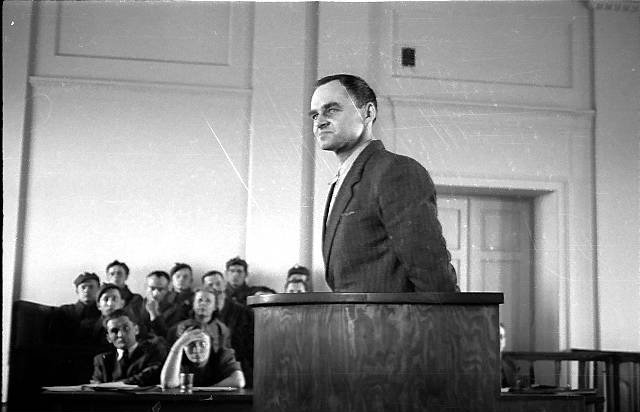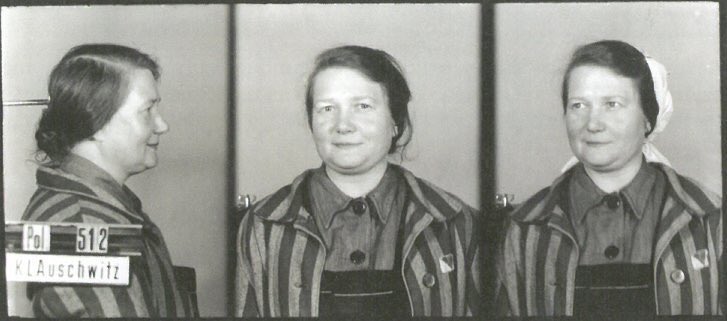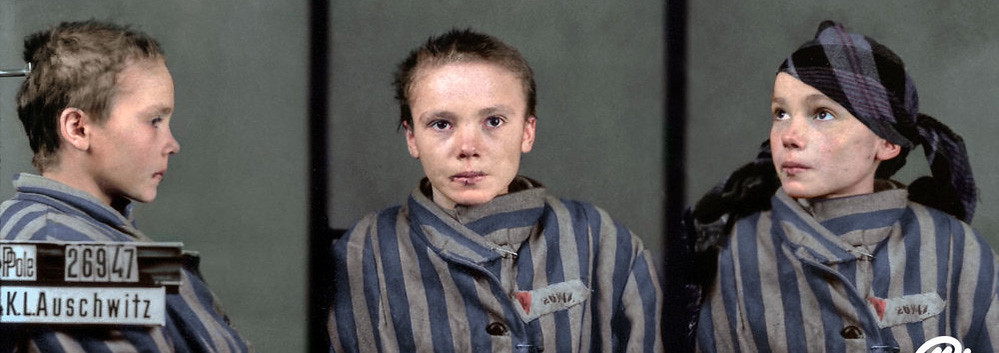Some things that the communists seem to ignore about the red inverted triangle
Among the communists, especially in social media, a symbol emerged from the concentration camps created by the national-socialist regime: the inverted red triangle.
A label that was imposed on political prisoners, many of them Catholics
 In addition to wearing it on Twitter profiles, some communists wear the red triangle in pin format on their clothes. The website of the Communist Party of Spain (PCE) sells these badges in its virtual store. In it they explain the meaning of this symbol: «Red triangle in homage to the European anti-fascist resistance since in the Nazi death camps the prisoners of the communist and socialist left were marked with a red cloth triangle». The definition of the PCE is inaccurate.
In addition to wearing it on Twitter profiles, some communists wear the red triangle in pin format on their clothes. The website of the Communist Party of Spain (PCE) sells these badges in its virtual store. In it they explain the meaning of this symbol: «Red triangle in homage to the European anti-fascist resistance since in the Nazi death camps the prisoners of the communist and socialist left were marked with a red cloth triangle». The definition of the PCE is inaccurate.
This system for labeling prisoners from Nazi concentration camps was introduced in 1936. The red triangle (Rot Winkel, in German) was created at the end of 1937 to identify "politische gefangene" (political prisoners) in general, not only to communists and socialists. In the poster on the right, published by the SS already in World War II, we see that on the column of red triangles the word «Politisch» (political) appears. The term was used by the Nazis in a very broad sense, applying to liberals, communists, socialists, trade unionists, freemasons, anarchists, priests, religious and even Catholics in general and also certain ethnic groups considered inferior by the Nazis. For example, in Auschwitz most of those political prisoners marked with a red triangle were non-Jewish Poles, mostly Catholics.

A Polish anti-communist who carried that symbol and was executed by the communists
Precisely, the image that heads this post is of a famous political prisoner of Auschwitz, and was neither communist nor socialist. His name was Witold Pilecki, Polish resistance officer, anti-communist and executed by the Communists in 1948. He was, in fact, the only person who voluntarily entered in Auschwitz, where he infiltrated to investigate and report on what was happening there. He was interned in Auschwitz on September 21, 1940, when the USSR still maintained friendly relations with Hitler's Germany. In fact, before Operation Barbarossa in June 1941, the Soviet NKVD handed over 4,000 German Jews and communists to the Nazi Gestapo who had fled to the USSR. The same USSR that propagates that PCE store with garments that show the acronym and the emblem of that communist dictatorship, in which millions of people were also killed for political reasons.

The red triangle labeled clerics and religious, mostly Catholics
Another famous political prisoner of Auschwitz who wore the red triangle was the Polish Catholic friar San Maximiliano Kolbe, also an anti-communist. He was sent to that concentration camp on May 28, 1941, when the USSR was still sending raw materials to Nazi Germany. As we see on these lines, Kolbe is usually represented with the red triangle and the letter "P" that identified the Polish political prisoners. That same symbol with that letter was the one worn by another Catholic martyr of Auschwitz, the Polish priest Franciszek Staszałek, pastor of Tęgobórz and prisoner 27402, murdered in that concentration camp on May 18, 1942.

Another marked with the red triangle with the letter P was the Polish Catholic priest Antoni Kwarta, a native of Boreczek and sent to Auschwitz on April 14, 1942 and classified as a prisoner 29610, who managed to survive the Holocaust. The Nazi persecution against the Catholic clergy competed hard with that perpetrated by the communists in the USSR. To get an idea, of the 14,000 priests in Poland in 1939, 1,811 were killed by the Nazis. The Catholic Church has already declared 108 of them martyrs. In the Dachau concentration camp there were 2,720 clerics held, 2,579 of them Catholics. Most of the clerics were Polish - a total of 1,780 - although there were also 447 Germans, 156 French, 109 Czechoslovakians and dozens of other nationalities, including a Spanish priest. Hundreds of priests were killed in Dachau, many of them in aberrant medical experiments in which they were infected with malaria, as one of the survivors, Czech Friedrich Hoffman, testified after the war.

Among the political prisoners labeled with the red triangle there were also nuns. It was the case of the Austrian Catholic nun Maria Cecilia Autsch. She was a Trinitarian nun whose religious name was Angela of the Sacred Heart. She was arrested by the Gestapo on August 10, 1940 for commenting on a market stating that "Hitler is a scourge for Europe." She is known as "The Angel of Auschwitz" because she kept watching over other prisoners, even at the risk of her life. She was murdered in Auschwitz on December 23, 1944.

The symbol that a crowd of Polish Catholics wore
Perhaps the largest group of prisoners labeled with the red triangle was that of non-Jewish Poles, mostly Catholics, and whatever the reason for their arrest. Already only in Auschwitz were about 70,000. Among them was the Catholic girl Czesława Kwoka, who at 14 became the prisoner number 26947 of Auschwitz. Born in the town of Wolka Złojecka, in Zamość County, the reason for her sending to that concentration camp was that the Nazis deported almost all Polish inhabitants of that region to put German settlers in their place. The horror eyes of this girl have become a portrait of the suffering that many children lived in those hellish fields. Czesława died in Auschwitz on March 12, 1943. I have been denouncing from this blog that Spanish communists from the City of Madrid have ignored year after year the Polish Catholics in their tributes to the victims of the Holocaust, despite 2.7 million of Polish Catholics were killed by the Nazis.

The interested oblivion of Polish Catholics by the communists
Perhaps one of the reasons for this 'oblivion' is that Nazi Germany and the USSR jointly invaded Poland in September 1939, after signing a secret pact between the dictatorships of Hitler and Stalin to divide that country and also Lithuania, Latvia, Estonia and Finland. We must not forget that the Nazi atrocities committed in Poland were possible thanks to the Soviet complicity with the Germans in 1939, a complicity that extended until the German invasion of the USSR, and that had episodes such as the collaboration between the Gestapo and the NKVD: they held several meetings that served, among other things, to act together against the Polish resistance. Likewise, it would be unfair to forget that the pact between Germany and the USSR led many communist parties to justify that invasion. The PCE, that now sells red triangles, justified in 1940 the Nazi-Soviet invasion of Poland, following the dictates issued by Moscow. Only a few years earlier, the "Polish Operation" of the Soviet NKVD against the Polish minority in the USSR in 1937-1938 had resulted in between 50,000 and 60,000 executed, including many communist Poles who had emigrated to the Soviet dictatorship thinking it would be a paradise for them. They discovered, too late, that communism was as murderous as nazism.
---
Main photo colored by Marina Amaral.
|
Don't miss the news and content that interest you. Receive the free daily newsletter in your email: Click here to subscribe |
- Most read
- Spain will modernize its fleet of firefighting seaplanes and buy seven new DHC-515s
- The ten oldest national flags in the world that are still in use today
- Lenin: numbers, data and images of the crimes of the first communist dictator
- The drift of the anti-Western right: yesterday Moscow, now Tehran, tomorrow Pyongyang?
- United States' last Hueys: Vietnam-era veterans still flying in the US Air Force
- Sierra Army Depot, a huge United States base with hundreds of Abrams tanks stored
- Eurofighter vs F-35: the opinions of professional pilots on these advanced fighters

 ES
ES





Opina sobre esta entrada: